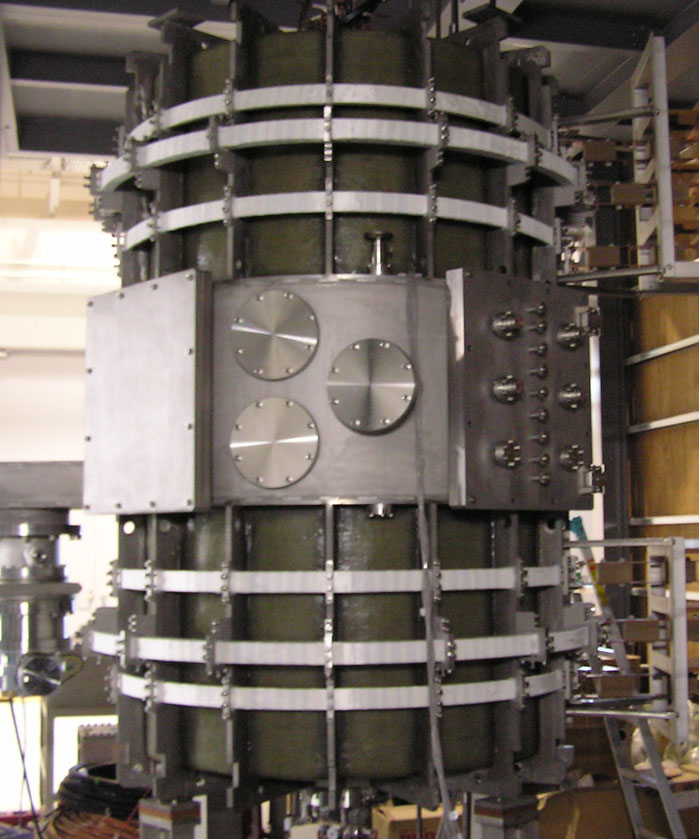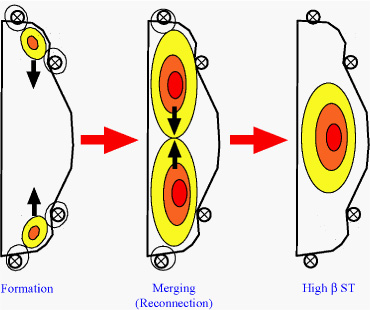
Design parameters:
|
Major radius (R) |
0.39 m |
|
Minor radius (a) |
0.24 m |
|
Toroidal field (B) |
0.3 T |
|
Plasma current (I) |
0.2 MA |
UTST (University of Tokyo Spherical Tokamak) was built jointly by the Takase-Ejiri Group (Department of Complexity Science and Engineering, Graduate School of Frontier Sciences and Department of Physics, Graduate School of Science) and the Ono Group (Department of Advanced Energy, Graduate School of Frontier Sciences, and Department of Electrical Engineering, Graduate School of Engineering), and is sited in the Transdisciplinary Sciences Experimental Building on the Kashiwa Campus.
It is funded by Grant-in-Aid for Scientific Research (S) to explore the formation of ultra-high beta ST plasma using plasma merging and the sustainment of high beta state by innovative methods using high frequency waves. When two plasmas merge together to form a single plasma, magnetic field lines reconnect, and the magnetic field energy is converted to the plasma kinetic energy. This can be utilized to reach the ultra-high beta regime quickly. Such research has been carried out on the TS-3 and TS-4 merging plasma devices. However, once reconnection is finished, the heating power goes away and the plasma decays to a lower beta state. Therefore, it is necessary to develop a method to sustain the plasma efficiently in a high beta state. Since high beta plasmas have extremely high dielectric constants, most waves are not accessible to the plasma core. New methods using exotic waves such as the high harmonic fast wave (HHFW) and the electron Bernstein wave (EBW) have been developed on the TST-2 spherical tokamak device. Expertise in these different areas are combined to challenge the difficult task of creating and maintaining a high beta ST plasma using unique methods.

High beta ST plasma formation by plasma merging